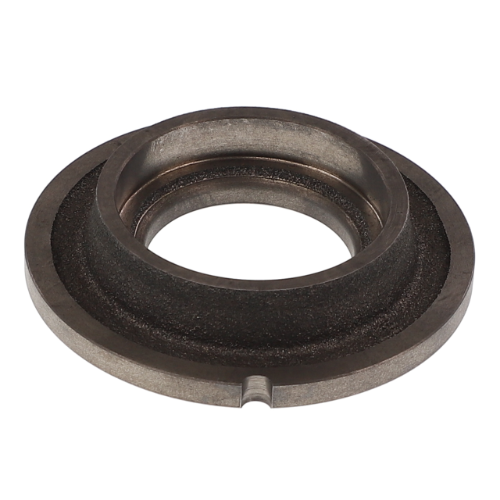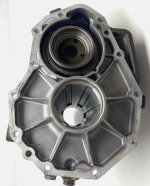I looked at the GC2300/2310 parts books, and they show a single "wet brake" as
@ray66v mentioned on the right side of the transaxle, just like my 2022 GC1723EB has. On mine, although the brake pedal is on the left side, there is a cross bar, and the linkage to the brake is on the right. There is also a cable on the left side, but this is for the differential lock which has a smaller pedal just to the right of the brake pedal. Is it possible you had the diff lock on or stuck? There are also additional linkages on the left side for the mower lift, and for the power take-off clutch plus front and rear PTO engagement. YMMV.
Edit: oops, I had looked at the GC1705/GC1710/GC1715/GC1720 parts book!
2010 GC2400 has brake rod each side.
here is adjust procedure from service manual.
never dug into specifics as to why rod on each side, possibly redundancy?
do know a 2015 GC1710 also has rod on each side. do not remember if the GC1725MB I work on has or not.
edit: looking at parts breakdown the 2 side pawls on transaxle are same part number and they look to be (have NOT dug into service manual) hooked onto the 1 shaft that runs through transaxle into the wet brake.
very possible 2 linkages are used to balance the forces on each end of that shaft (hence the adjust procedure) as well as providing mechanical redundancy.
who knows. my stuff works so not gonna spend lot of time on this.
I dove into this a bit more, and here's what I found in the parts books:
- All GC models (that I could find) have the transaxle set up where there in a horizontal fore-and-aft shaft with the pinion gear on it that drives the ring gear on a horizontal side-to-side shaft that is above the axles. That has a small spur gear on it that drives a large bull gear mounted on the differential (i.e., large gear reduction ratio) below it. And the differential drives the two rear axle shafts.
- On the GC2400/GC2410/GC2600/GC2610/GC2300/GC2310 models, there are two independent brakes, one on each side, the left one mounted in the main transaxle case (which includes the left axle housing) and the right one mounted in the (left) axle housing. The outside of each brake is keyed to the housing and the inside is splined to the end of differential or the axle shafts. The brakes are independent within the transaxle but are tied together by the dual linkages down each side of the tractor. If the brake linkages are correctly adjusted and you lift the rear tires off the ground and engage the brakes, neither tire would move.
- On the GC1723/GC1725 models, there is only one brake, and instead of it being located along the axle centerline, it is instead on the horizontal side-to-side shaft above the axles. The single brake is mounted in the (left) axle housing (see photo below). The outside of the brake is keyed to the housing and the inside is splined to that shaft. If lift either one of the rear tires off the ground and engage the brake, the tire off the ground will not move. If you lift both rear tires off the ground and engage the brake, when you turn one tire one way, the other one will turn in the opposite direction, just like on a car with the automatic transmission in park, or with a shift transmission in gear. In the real world I believe that this means that as long as one of the rear tires has traction, the brake will stop the tractor from moving, but perhaps it's not quite as reassuring as the dual brakes of the earlier models.
@Dmacleo said above: "
do know a 2015 GC1710 also has rod on each side". That is in contrast to what I am seeing in the parts books, but perhaps there were some interim models with the older parts/dual brakes.
Also, on any GC model, if you have the 4-wheel drive engaged, you will get braking on the front tires also.
Below is a picture from eBay of the single brake in the axle housing of a GC1720. The brake is near the top and the big cone on the bottom is where the axle shaft lives.


